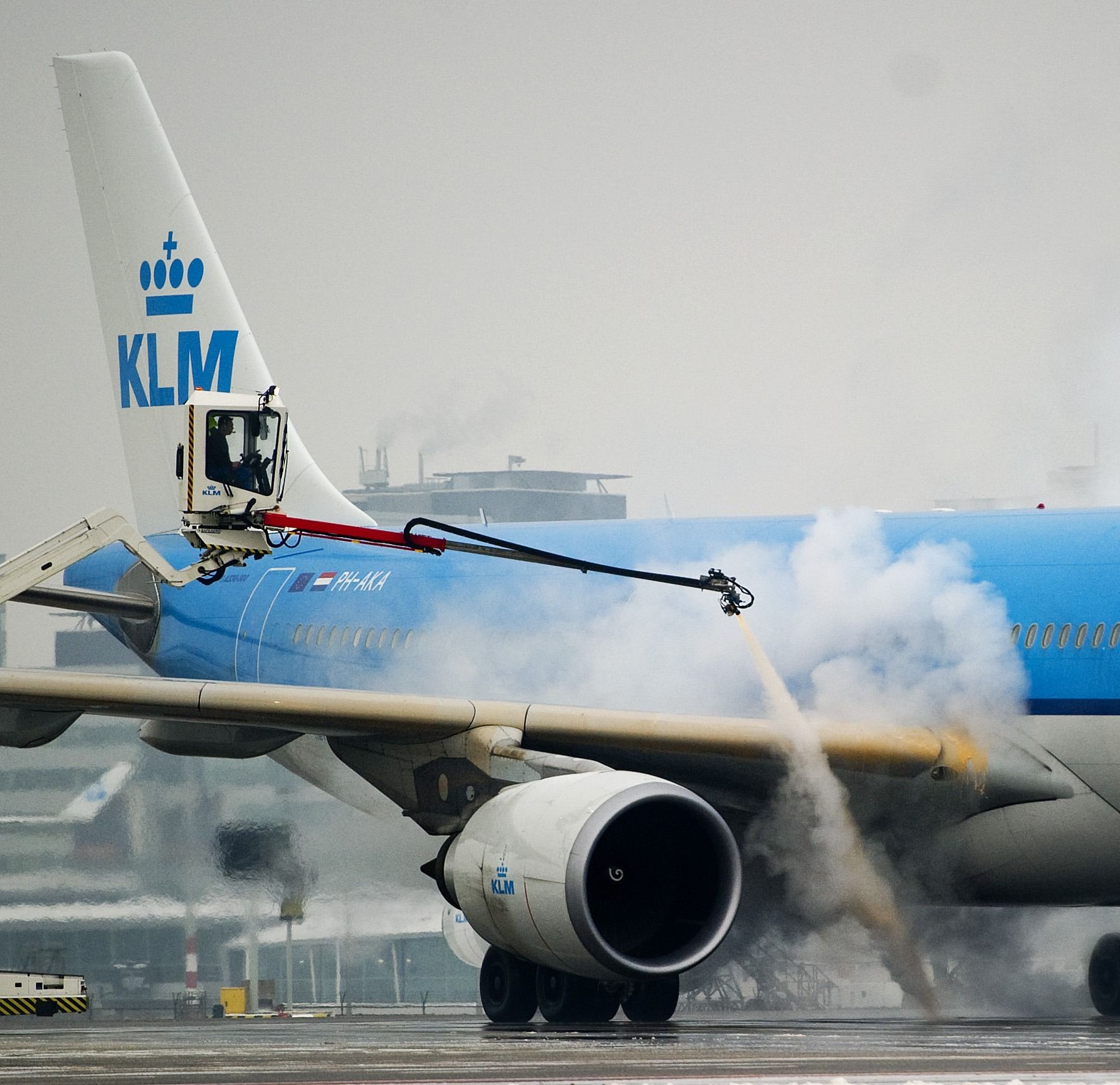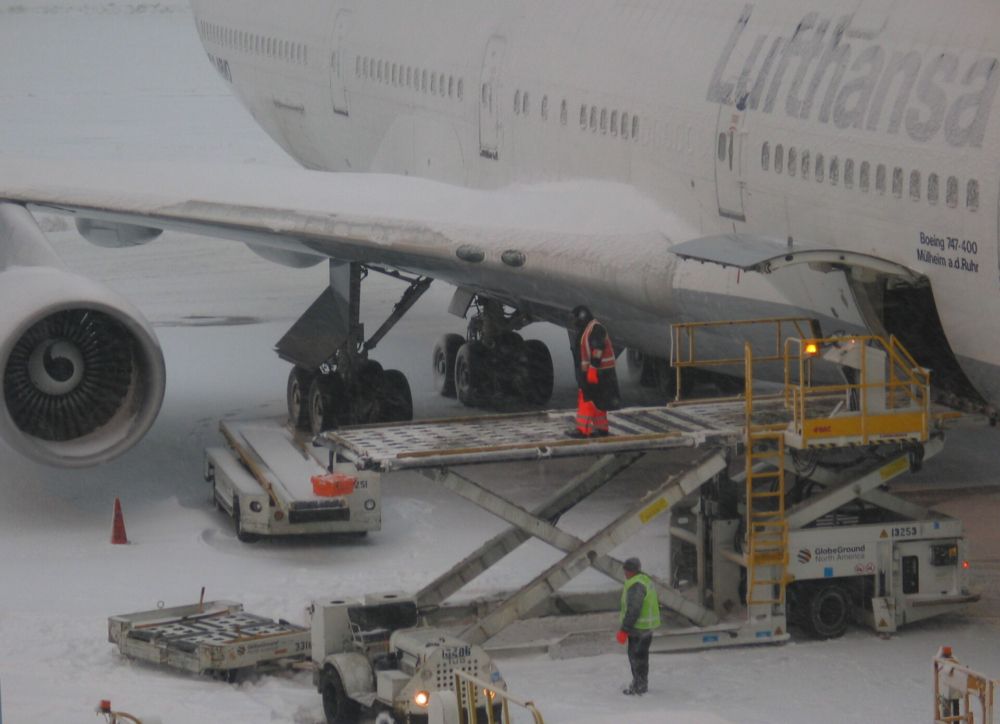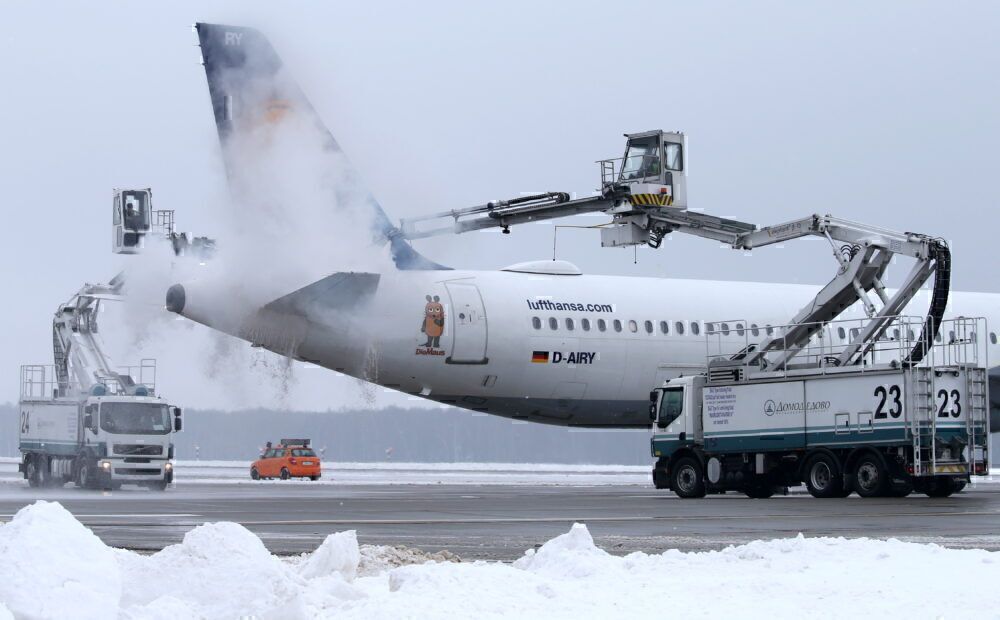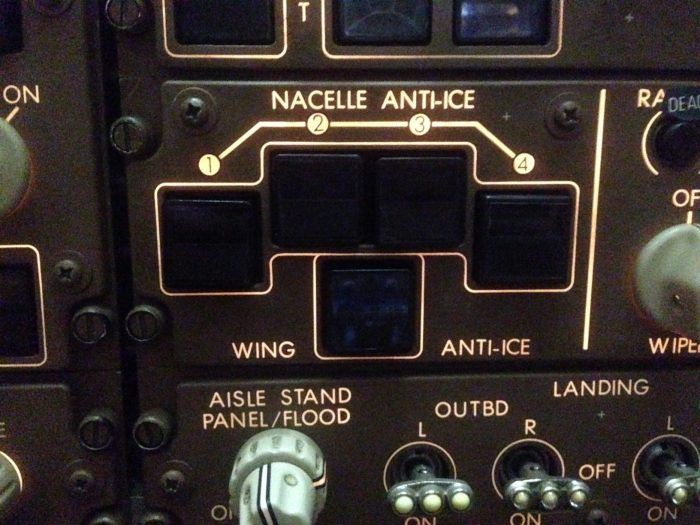Winter conditions mean aircraft deicing in many locations. We have all seen this taking place at airports, with aircraft sprayed on the ground before departure. Unfortunately, in some locations, it is a common cause of delays in the winter too. This article takes a look at why aircraft are deiced and how the process works.
Why deice aircraft?
We may take it for granted that aircraft are deiced in wintery freezing conditions - but why does this happen? Most importantly, it ensures safe aircraft operation.
Aircraft are designed to operate 'clean' and free of build-ups or foreign objects (including ice and snow). This is, of course, especially important on the wings, and these are the areas treated for ice before the flight. Ice build-up here could affect the aerodynamic properties and performance of the aircraft. It could also block sensors or vents.
Ice build-up would also add weight to the aircraft. This is obviously best avoided for performance, but it would not have been considered in performance calculations. Physical breaking off of ice or snow as the aircraft starts to roll could also be a danger if it hit other parts of the fuselage, wings, or engines.
De-icing and anti-icing sprays
Airports that need to conduct deicing should have equipment and processes in place. Getting this right is vital to avoid delays and disruption.
The aircraft will be positioned in a suitable area, with adequate drainage to collect the liquid, keeping it away from the ground watercourse. This could be at the gate area, or the aircraft could be moved to a dedicated area, often closer to the departure runway.
Aircraft can be sprayed with two different liquids. The first is a deicing liquid to remove ice accumulation. This is usually a heated glycol-water solution. It is applied using a high-pressure spray, generally following the wings from the wingtips to the fuselage.
A second, thicker liquid may also be applied to prevent further icing. This is usually propylene glycol and will remain on the wings as a gel-like substance. This is sometimes colored to help see which areas have been treated. This application will prevent further ice accumulation while on the ground and taxing (a time limit must be adhered to, though). Once the aircraft reaches speed, it will disperse, not affecting in-flight freezing or aircraft performance.
De-icing in flight as well
De-icing on the ground is not the only defense against icing on aircraft. Most aircraft also have systems to control this during flight too. At altitude, any moisture that accumulates on aircraft wings can freeze and affect aircraft performance.
The most common on large commercial jets is the use of heated tubes beneath the surface of the wings and the aircraft tail. Smaller aircraft may also use heated rubber surfaces or antifreeze solutions.
Feel free to discuss aircraft deicing methods and experiences further in the comments.




